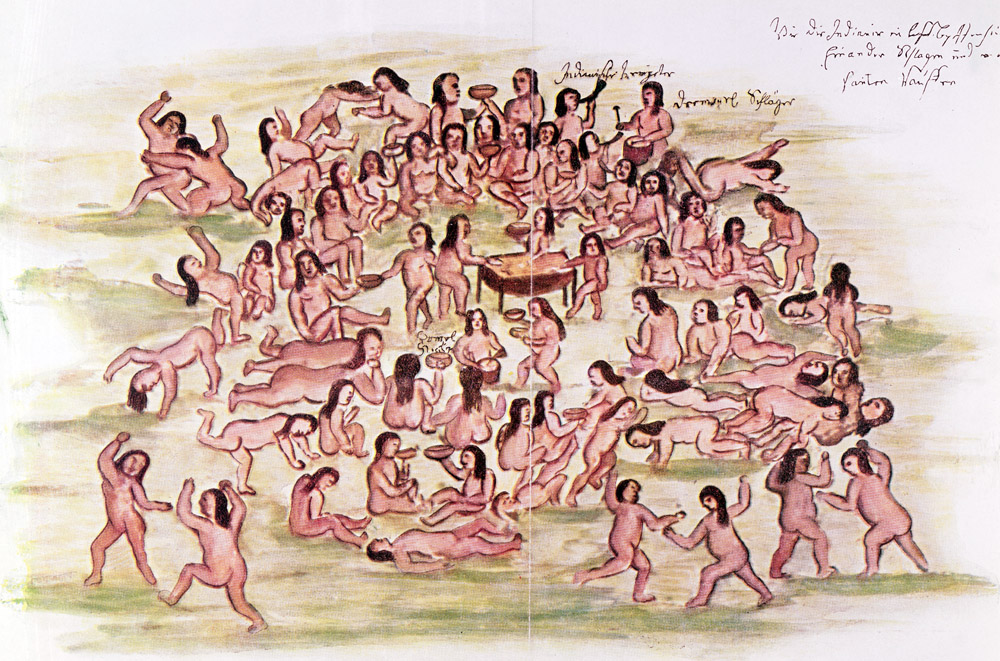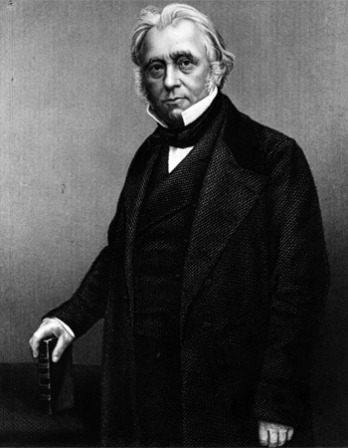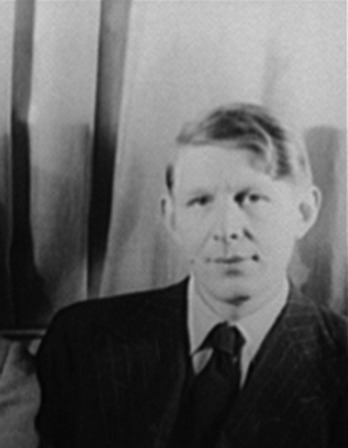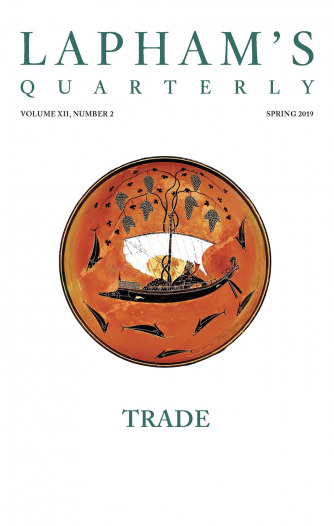Some writers take to drink, others take to audiences.
—Gore Vidal, 1981Under the Influence
John Elliotson witnesses a mesmerizing surgery.
Last November 22 the Royal Medical and Chirurgical Society of London assembled to hear read an “Account of a Case of Successful Amputation of the Thigh, During the Mesmeric State, Without the Knowledge of the Patient,” in the district hospital of Wellow, Nottinghamshire.
The mesmerizer was W. Topham, Esq., barrister, of the Middle Temple: the operator, W. Squire Ward, Esq., surgeon, of Wellow Hall. The patient was a laborer, six feet high and forty-two years of age, named James Wombell. He had suffered for nearly five years from neglected disease of the left knee, the interior of the joint of which was found after the amputation deeply and extensively ulcerated. “The slightest motion of the joint was attended by the most excruciating agony; his nights were almost wholly sleepless in consequence of the painful startings of the limb; his pulse weak and rapid; his face constantly marked with a hectic flush; his tongue foul; appetite gone.” In truth, when Mr. Topham first saw him, on September 9, “He was sitting upright upon a bed in the hospital—the only position which he could bear—he complained of great pain from his knee and of much excitability and loss of strength from his constant restlessness and deprivation of sleep, for he had not, during the three previous weeks, slept more than two hours in seventy.”
On this day he was first mesmerized by Mr. Topham, and for thirty-five minutes. “The only effect produced was a closing of the eyelids, with that quivering appearance that so commonly results from the process, and though awake and speaking, he could not raise them until after a lapse of a minute and a half.”
On the tenth he was sent to sleep in twenty minutes. On the eleventh, “He was suffering great agony, and distressed even to tears.’’ Mr. Topham “commenced by making passes longitudinally over the diseased knee; in five minutes he was comparatively easy, and on proceeding further to mesmerize him, at the expiration of ten minutes more he was sleeping like an infant. Not only his arms were then violently pinched but also the diseased leg itself, without his exhibiting any sensation: yet his limb was so sensitive to pain in his natural state, he could not bear even the lightest covering to rest upon it. That night he slept seven hours without interruption.”
“On September 22, the patient was first apprised of the necessity of an early amputation. The communication seemed almost unexpected, and affected him considerably, and destroyed his natural sleep that night.” The next day he was still “fretting, restless, and in consequent pain.” Yet he was put to sleep mesmerically in four and a half minutes.
Although in this mesmeric coma the sensibility to mechanical causes of pain was so far lessened that violent pinching and sudden pricking, of even the diseased limb, produced no evidence of sensation, and he lost all pain in his knee while this was in perfect rest, the exquisitely sensitive interior of the diseased joint was not proof against the torture of motion, which, however slight, agonized and awoke him.
At the time of the operation, October 1, it was found impossible, without such torture as aroused him from his mesmeric coma, to remove him from his bed to the table. Indeed, his coma was not so deep but that it was dissipated by attempting to converse with him, and in general it ceased spontaneously in half an hour, his waking being “slow and gradual and without the least start.” Instead of being placed upon a table, he was therefore lifted with his low bed upon a temporary platform, and “he was soon put into the mesmeric sleep, although he was considerably excited by hearing the cries of another patient upon whom Mr. Ward had been performing a tedious and painful operation.” He was then “drawn by means of the bedclothes beneath him toward the end of the bed.” Even this movement excited the pain and awoke him. But the pain soon ceased, and his limb being “raised about two inches from the mattress” by a surgeon present (Mr. Wood), who “rested the heel upon his shoulder and supported the joint with his hand,” he was mesmerized into coma again in four minutes.
Mr. Topham continued to mesmerize him for fifteen minutes and then informed Mr. Ward that the operation might be begun, and “brought two fingers of each hand gently in contact with the patient’s closed eyelids; and there kept them, still further to deepen the sleep.” This is a circumstance of no little importance to remember. Of all parts of the body, the eyes are the most ready receivers and transmitters of mesmerism.
The operation was now commenced. “Mr. Ward, after one earnest look at the man,” in the words of Mr. Topham, “slowly plunged his knife into the center of the outside of the thigh, directly to the bone, and then made a clear incision round the bone, to the opposite point on the inside of the thigh. The stillness at this moment was something awful; the calm respiration of the sleeping man alone was heard, for all other seemed suspended. In making the second incision, the position of the leg was found more inconvenient than it appeared to be,” and Mr. Ward, to use his own words, “having made the anterior flap…was under the necessity of completing the posterior one in three stages. First, by dividing a portion of the flap on the inside; then a similar portion on the outside. This proceeding, which was of course far more tedious and painful than the ordinary one, was necessary to enable me to pass the knife through under the bone and thus complete the whole, as I could not sufficiently depress the handle to do so, without the two lateral cuts.” Yet, notwithstanding all this, the patient’s “sleep continued as profound as ever. The placid look of his countenance never changed for an instant; his whole frame rested, uncontrolled, in perfect stillness and repose; not a muscle was seen to twitch.To the end of the operation, including the sawing of the bone, securing the arteries, and applying the bandages, occupying a period of upward of twenty minutes, he lay like a statue.”

The Effect of Alcohol on the Indians in the Time of the Conquest, by Florian Paucke, 1749–1767. © Museo de America, Madrid, Spain / The Bridgeman Art Library.
Soon after the second incision, “a low moaning” was heard at intervals until the conclusion of the operation, that is, after the leg was off and while the arteries were tying and the bandages putting on, giving “to all present the impression of a disturbed dream.” That it arose from troubled dreaming I have no doubt, for in the mesmeric coma it is common for patients, after the lapse of a certain time, to dream and talk, and especially of anything which has just before strongly impressed them. Had it arisen from the operation, it would have occurred during the most painful periods—would have occurred, as it did not, exactly and only at moments of the proceeding most likely to be painful, whereas it occurred as much at moments when nothing was doing to give pain. The man could not have moaned from pain in spite of himself at moments when there was nothing to make him moan in spite of himself. It would have been increased, and indeed changed to a sudden and louder noise, whenever the end of the sciatic nerve was roughly treated. For, still further to test his insensibility, Mr. Ward “twice touched” and, as he informs me, pretty roughly and with the points of the forceps, so that he in fact pricked “the divided end of the sciatic nerve without any increase of the low moaning.” Mr. Ward further informs me that he “once put his thumb roughly upon the nerve in taking the posterior flap in his hand to sponge, and also used the sponge very roughly.”
The mesmeric state of the patient usually lasted half an hour, and after this lapse of time, he “gradually and calmly,” as usual, awoke.
“At first,” said the surgeon, Mr. Wood, “he uttered no exclamation, and for some moments seemed lost and bewildered,”—a characteristic and striking phenomenon so familiar to mesmerists when any visible change in external circumstances has occurred while the patient was asleep. But, after looking around, he exclaimed, “I bless the Lord to find it’s all over.”
“He was then removed to another room, and following immediately,” Mr. Topham “asked him in the presence of all assembled to describe all he felt or knew after he was mesmerized. His reply was, ‘I never knew anything more and never felt any pain at all; I once felt as if I heard a kind of crunching.’” Mr. Topham asked if that were painful. He replied, “No pain at all.”

John Elliotson
From Numerous Cases of Surgical Operations Without Pain in the Mesmeric State. Invented by Franz Anton Mesmer in the 1770s, mesmerism became the subject of a commission convoked by King Louis XVI in 1784: Benjamin Franklin, among others, was charged with examining its efficacy. They could not find evidence to support the theory of “animal magnetism” but noted some patients were helped when they knew the intended outcome. Elliotson, a physician who championed the therapeutic value of hypnosis, founded a mesmeric hospital in 1849.


